Trampolines are a great source of outdoor fun and exercise, but over time, their nets may start to sag due to various reasons, such as wear and tear, exposure to harsh weather, or incorrect installation.
A sagging trampoline net can pose a safety hazard and should be fixed immediately. In this guide, we will discuss common causes of sagging trampoline nets and provide steps to fix them.
We will also give you tips on how to prevent sagging trampoline nets from happening in the first place through regular maintenance and inspection, proper installation and use, and storing the trampoline properly during harsh weather conditions.
By following these tips and steps, you can ensure your trampoline net stays tight and safe for your family to enjoy.
How to fix sagging trampoline net: To fix a sagging trampoline net, inspect and tighten all attachments, replace damaged parts, and adjust tension. Ensure a secure, taut net for safety and proper use.
How To Fix Sagging Trampoline Net?
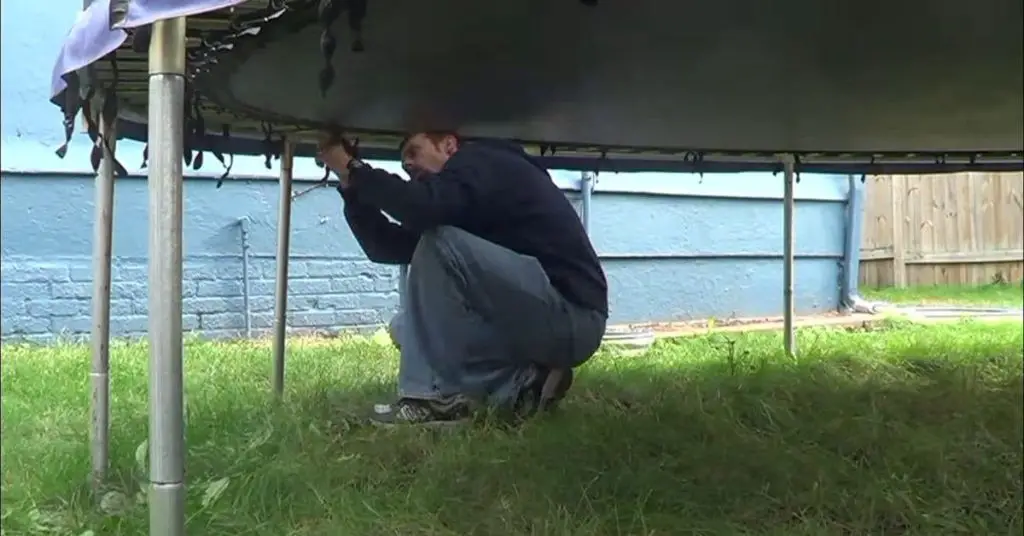
If you own a trampoline, you may sometimes experience a sagging net. Various factors, such as wear and tear, exposure to harsh weather conditions, incorrect installation, or overuse, can cause this. Fortunately, fixing a sagging trampoline net is relatively easy and can be done with simple steps.
By identifying the cause of sagging, tightening the net and springs, replacing damaged parts, adjusting net tension, and ensuring proper installation, you can restore your trampoline to a safe and enjoyable state.
This guide will provide you with a comprehensive overview of the common causes of sagging trampoline nets, steps to fix them, and tips for preventing future sagging issues.
Common Causes of Sagging Trampoline Nets
Trampolines are a popular form of outdoor recreation for people of all ages. They are used for various activities, such as exercise, sports, or leisure. However, over time, the trampoline net may start to sag, causing safety concerns for those who use it.
Sagging trampoline nets can result in accidents or injuries if not addressed promptly. This article will discuss the common causes of sagging trampoline nets and how to fix them.
Wear and Tear Over Time
One of the most common causes of sagging trampoline nets is wear and tear over time. Over time, the trampoline net may become stretched or damaged due to frequent use.
This stretching or damage may cause the net to lose its original tension, resulting in a sagging appearance. To prevent wear and tear, it’s important to regularly inspect the trampoline net and replace it when necessary.
Exposure to Harsh Weather Conditions
Another common cause of sagging trampoline nets is exposure to harsh weather conditions. Extreme heat, cold, or moisture can cause the trampoline net to deteriorate faster than normal. This deterioration can result in sagging or even tears in the net.
Consider installing a weather cover or storing the trampoline during extreme weather conditions to prevent exposure to harsh weather conditions.
Incorrect Installation
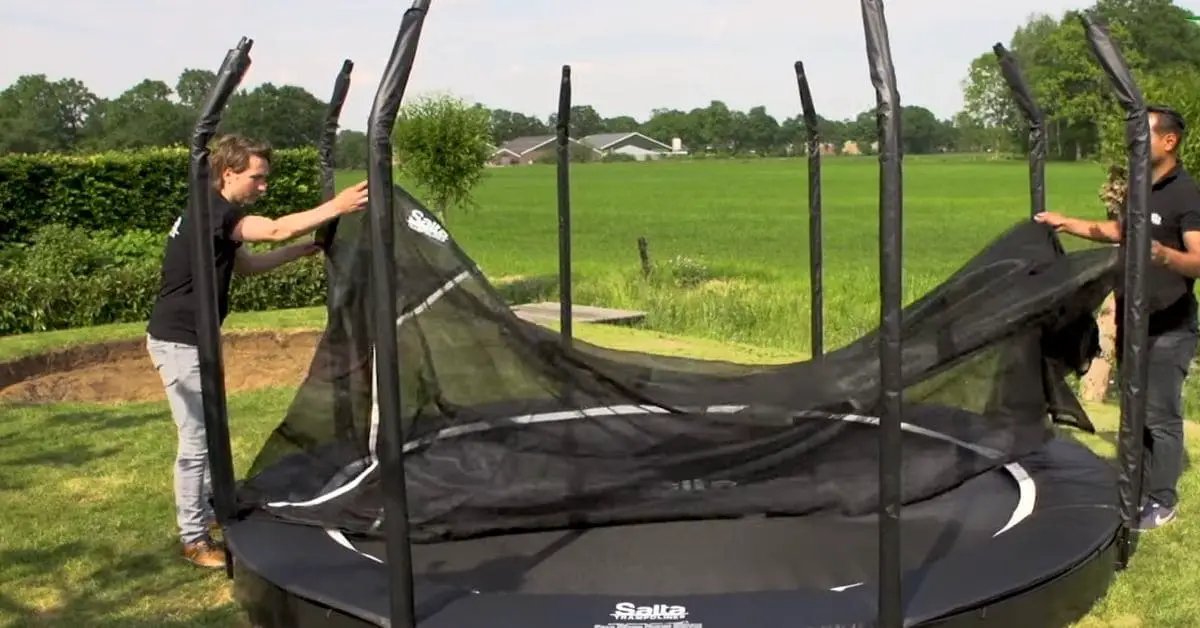
Improper installation can also cause a trampoline net to sag. If the trampoline net is not installed properly, it may not withstand the weight of those using it, resulting in sagging or tearing. Follow the manufacturer’s instructions when installing a trampoline net or hire a professional to do it for you.
Overuse or Excessive Weight on the Trampoline
Overuse or excessive weight on the trampoline can also cause the net to sag. The net may become stretched or damaged if the trampoline is used frequently or has too much weight.
To prevent overuse, limit the amount of time the trampoline is used each day, and follow weight limits set by the manufacturer.
Steps to Fix a Sagging Trampoline Net
Trampolines are a fun and exciting way to stay active and entertain your family and friends. However, a sagging trampoline net can be a safety hazard and may impact the overall performance of your trampoline.
We will walk you through the steps to fix a sagging trampoline net and get your trampoline back to its safe and functional state.
Step 1: Identify the Cause of Sagging and Assess the Damage
The first step in fixing a sagging trampoline net is to identify the cause of the problem. Sagging can occur due to wear and tear over time, exposure to harsh weather conditions, incorrect installation, or overuse or excessive weight on the trampoline.
Once you have identified the cause of the sagging, assess the damage to determine what parts need to be replaced or repaired.
Step 2: Tighten the Net and Springs if They Are Loose
If the net or springs are loose, they may need to be tightened to fix the sagging. Start by tightening the net by pulling it towards the poles and securing it in place.
Then, tighten the springs by using a spring tool to pull them toward the hooks. Tighten each spring equally to ensure even tension across the trampoline.
Step 3: Replace any Broken or Damaged Parts
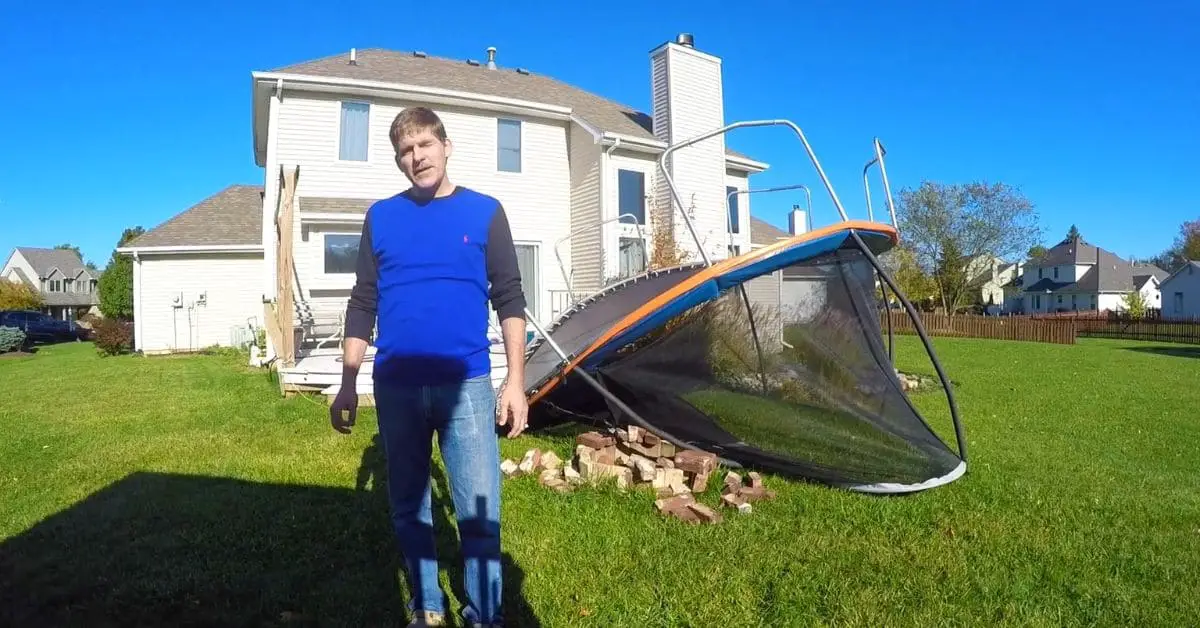
If any trampoline parts are broken or damaged, they must be replaced. This includes any broken poles, damaged netting, or worn-out springs. When replacing parts, use high-quality replacement parts that are compatible with your trampoline.
Step 4: Adjust the Net Tension by Adding or Removing Springs
If tightening the net and springs does not fix the sagging, you may need to adjust the net tension by adding or removing the springs. To do this, remove the hooks from the springs and add or remove springs as needed.
Make sure to evenly distribute the springs around the trampoline for even tension.
Step 5: Ensure Proper Installation and Alignment of the Net
Finally, ensure that the net is properly installed and aligned. The net should be securely attached to the poles and should not have any gaps or sagging. Check that the net is aligned with the trampoline frame and adjust if necessary.
Preventing Sagging Trampoline Nets
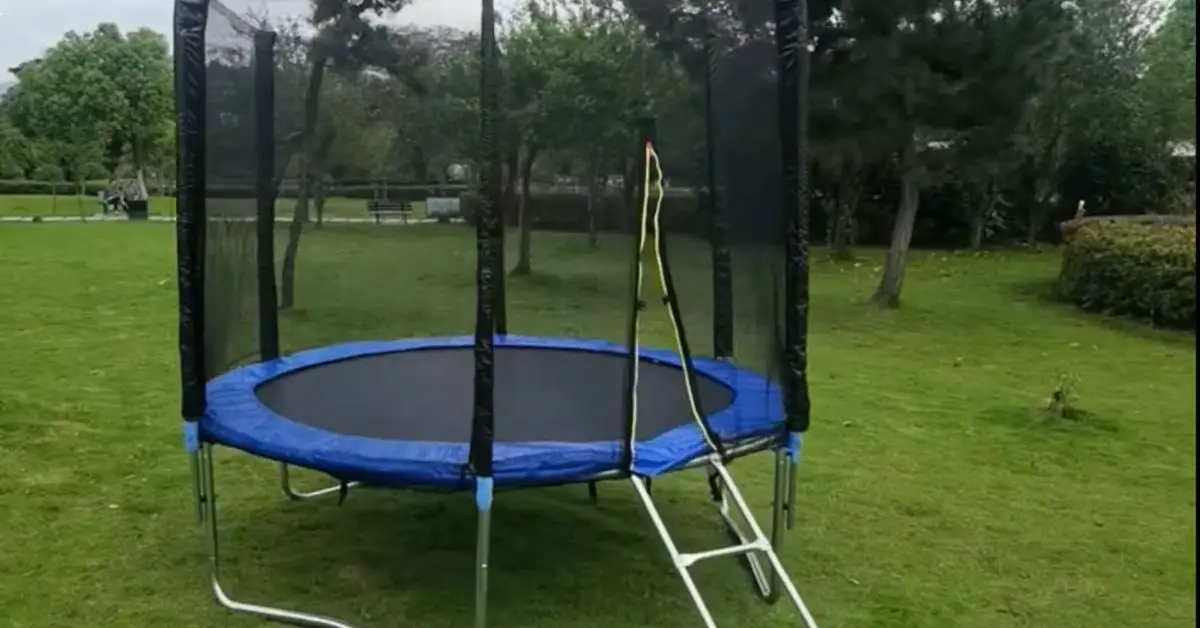
Trampolines are a great way to exercise and have fun outdoors, but they require regular maintenance to prevent sagging and other issues. Here are some tips for preventing sagging trampoline nets:
Regular Maintenance and Inspection:
It’s important to inspect your trampoline regularly to make sure everything is in good working order. Check for any signs of wear and tear, such as holes or tears in the net or mat, and replace any damaged parts immediately.
You should also tighten any loose bolts or springs and check the frame and legs for any signs of damage.
Proper Installation and Use:
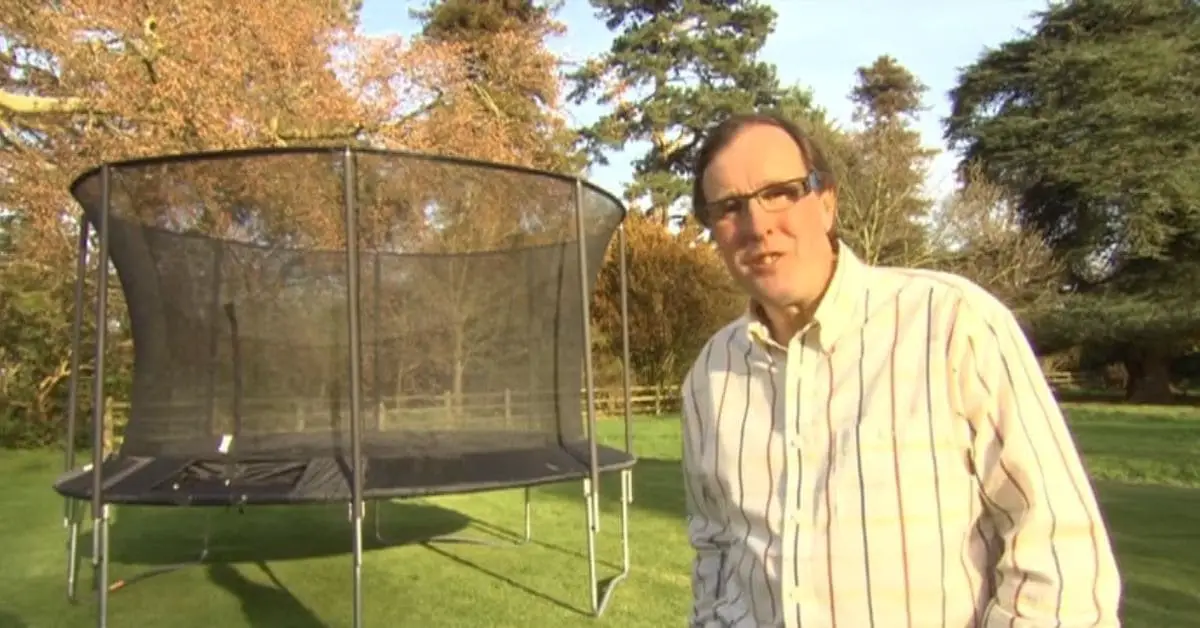
Proper installation is key to preventing sagging trampoline nets. Make sure you follow the manufacturer’s instructions carefully when assembling the trampoline, and double-check all the bolts, springs, and other components to ensure they are properly secured.
You should also ensure that everyone who uses the trampoline follows the safety guidelines and rules, such as limiting the number of people on the trampoline at one time and not performing dangerous stunts.
Storing the Trampoline Properly:
If you live in an area with harsh weather conditions, such as snow or heavy rain, it’s important to store your trampoline properly during these times. You can either disassemble the trampoline and store it indoors or cover it with a weather-resistant tarp to protect it from the elements.
This will help prevent damage to the net and other components, which can cause sagging and other issues over time.
By following these tips, you can help prevent sagging trampoline nets and keep your trampoline in good working order for years to come.
Regular maintenance and inspection, proper installation and use, and storing the trampoline properly during harsh weather conditions are all keys to keeping your trampoline safe and enjoyable for the whole family.
Final Safety Check
Below, these final safety checks, you can be confident that your trampoline is in good condition and safe for use. Regular inspections and maintenance will help keep it that way, ensuring hours of safe and enjoyable bouncing fun.
Ensuring All Parts Are Securely In Place:
- Carefully inspect all the components of the trampoline, including the frame, net, support poles, and connectors.
- Check for any loose or missing bolts, screws, or other fasteners. Tighten or replace them as needed.
- Examine the attachment points of the net to the frame and poles. Make sure they are secure and properly fastened.
- Ensure that the support poles are stable and not leaning or wobbly. If any poles are unstable, address the issue before use.
- Verify that any additional reinforcement mechanisms, such as zip ties or bungee cords, are holding firmly and not showing signs of wear or damage.
Verifying that the Net is Taut and Free from Sagging:
- Stand back and visually inspect the trampoline net to ensure it is evenly tensioned all the way around.
- Run your hand along the net’s surface to feel for any areas of sagging or slack.
- Pay special attention to the top of the net, where it attaches to the support poles. Ensure there are no gaps or loose sections.
- Gently bounce on the trampoline to test the net’s stability. If the net sags excessively or feels loose, it requires further adjustment.
- If you notice any sagging or slack, revisit the tensioning and adjustment steps outlined earlier in the process to correct the issue.
Confirming that the Trampoline is Safe for Use:
- Before allowing anyone, especially children, to use the trampoline, perform a final safety assessment.
- Double-check that all safety measures, such as enclosure nets and padding, are in place and functional.
- Confirm that the trampoline is set up on level ground, away from obstacles or hazards.
- Ensure there are no sharp objects, debris, or foreign objects on the trampoline mat that could cause injury.
- Inspect the surrounding area to ensure there is ample clearance and no potential hazards, like overhanging branches.
- Remind users of the trampoline’s weight limit and safety guidelines.
- Emphasize the importance of proper adult supervision, especially when children are using the trampoline.
FAQs
Q.1 Why is my trampoline net sagging?
Trampoline nets can sag over time due to several reasons. It could be caused by stretched or worn-out netting, loose or damaged attachment points, or improper installation. Regular use and exposure to weather elements can also contribute to the sagging.
Q.2 How can I fix a sagging trampoline net?
First, ensure that all attachment points are secure and in good condition to fix a sagging trampoline net. If the netting is stretched or damaged, you may need to replace it with a new one.
Adjusting the tension of the netting by tightening the straps or bungee cords can also help reduce sagging. Additionally, following the manufacturer’s instructions for proper installation is crucial to maintain a taut and secure trampoline net.
Q.3 Are there any temporary fixes for a sagging trampoline net?
While it’s best to address the root cause of the sagging, you can try a temporary fix by using zip ties or bungee cords to tighten the netting.
However, keep in mind that these solutions are not long-term fixes and may not provide the same level of safety and stability as proper repairs or replacements.
Q.4 Should I seek professional help to fix a sagging trampoline net?
If you are unsure about how to fix a sagging trampoline net or lack the necessary tools and expertise, it is advisable to seek professional assistance.
Trampoline experts or technicians can inspect the netting, identify any underlying issues, and provide appropriate solutions to ensure the safety and longevity of your trampoline.
Q.5 How can I prevent the trampoline net from sagging in the future?
Regular maintenance is key to preventing trampoline net sagging. Ensure that the netting is properly installed, regularly inspect attachment points for any signs of damage or wear, and replace worn-out netting promptly.
Avoid exposing the trampoline to harsh weather conditions for extended periods and encourage proper use by adhering to weight limits and safety guidelines.
Conclusion
In conclusion, fixing a sagging trampoline net is a relatively straightforward process that can be accomplished by following a few simple steps.
Identifying the cause of sagging and assessing the damage is the first step, which allows you to determine the appropriate course of action.
Tightening loose netting and springs, replacing any broken or damaged parts, and adjusting net tension by adding or removing springs are crucial steps in restoring the trampoline’s integrity.
Additionally, ensuring proper installation and alignment of the net is essential for optimal performance.
To prevent sagging trampoline nets in the future, regular maintenance and inspection are key. This includes checking attachment points, replacing worn-out parts, and promptly addressing any signs of wear and tear.
Proper installation and adherence to weight limits and safety guidelines during use can also prevent sagging. Lastly, storing the trampoline properly during periods of non-use, protecting it from harsh weather conditions, can help maintain its longevity.
By following these steps and practicing proactive care, you can enjoy a safe and resilient trampoline net for years to come.
We hope our guide on How to Fix sagging trampoline nets has helped you. If you have any questions, please feel free to comment below.

